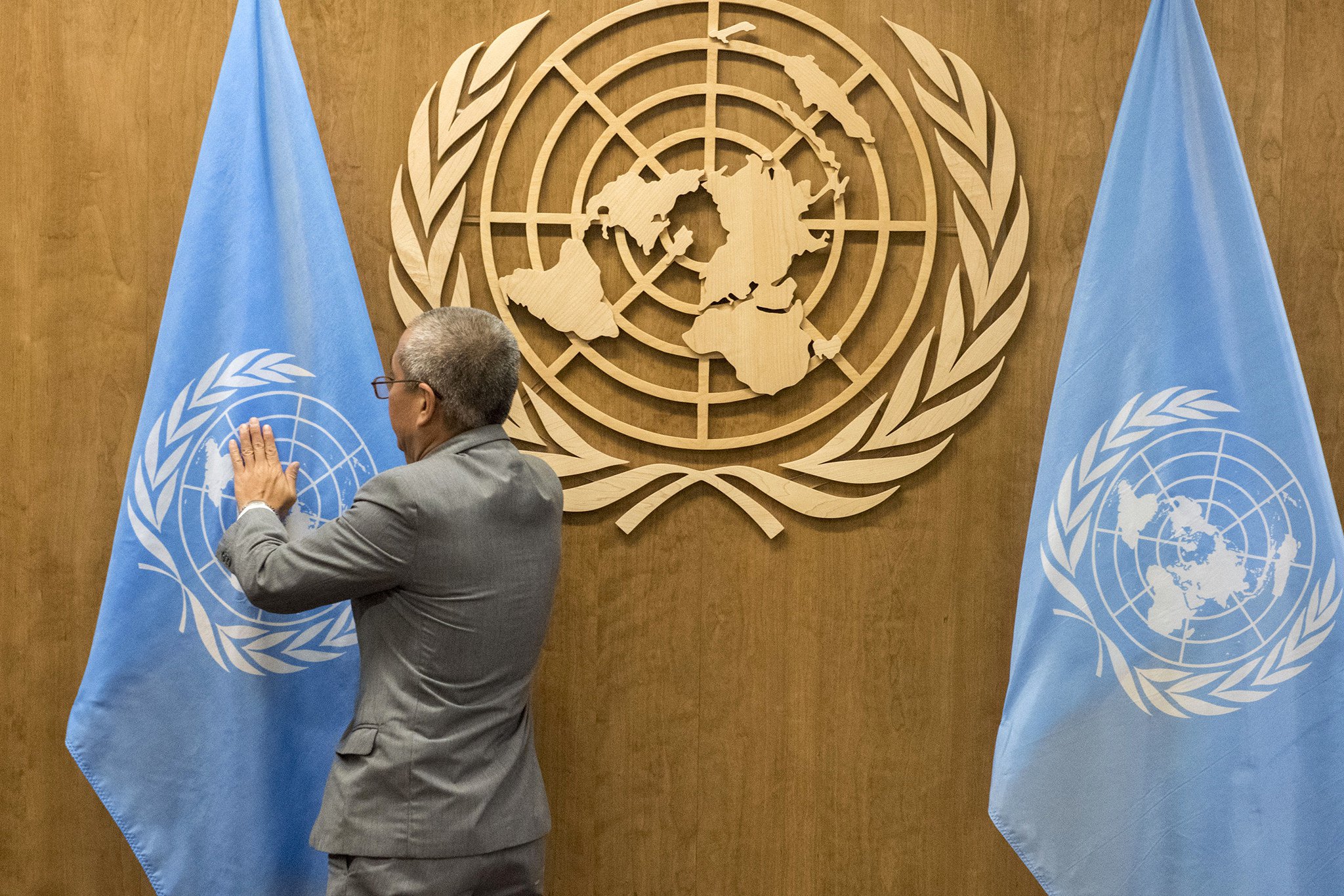A colleague told me yesterday about the goldfish he owned when he was a child.
The goldfish used to swim in precise circles in its small bowl. When the water in the bowl needed changing, the goldfish was temporarily moved to the much bigger bathtub. And yet, despite its more spacious surroundings, the fish continued to swim in the same small circle.
As the UN gathers for its 72nd annual general assembly with an opening session entitled ‘Focusing on people: striving for peace and a decent life for all on a sustainable planet’, the Secretary-General continues to move peace and conflict resolution to centre stage.
Under what began as the ‘sustaining peace’ agenda in 2015, the Secretary-General now includes the need for greater UN focus on ‘peace diplomacy’.
This ‘surge in peace diplomacy’ sounds promising. But it also sounds somewhat like the goldfish in the bathtub – making the same moves, regardless of the bigger space.
This ‘bigger space’ represents innovation, longer term and locally-committed approaches to ending violent conflict. But increasing diplomacy and more layers of UN bureaucracy suggest it isn’t being used.
More bureaucracy does not mean more peace
Bureaucratising peace efforts does not suggest the significant shift that is needed to change how the UN understands and works in situations of violent conflict. Nor does it change how it focuses on people.
The phrase ‘peace diplomacy’ highlights a crucial problem. Diplomacy is the art of high-level engagement across national bodies: government to government. But violent conflicts do not exist solely at this level, where actors can be addressed through diplomacy.
The experience of violent conflict is contradictory. Actors and evolving dynamics are unclear, and the role of international players is chaotic at best.
Even the experience of conflict resolution attempts can be brutal and the aftermath, as research from the Secure Livelihoods Research Consortium has shown, is almost always unpredictable and messy.
All of this is a far cry from what might reasonably be expected to be addressed through stronger peace diplomacy.
Diplomacy assumes legitimacy. But what is legitimacy?
The notion of diplomacy is rooted in the idea of a clear hierarchy. If they are to help those on the receiving end of violent conflict, diplomatic efforts must be based on the assumption that one legitimate representative speaks to another. But legitimacy is often extremely difficult to establish in situations of conflict.
Who can speak for whom is a challenging question for researchers. In situations of conflict, it can also change very quickly. In many countries that experience violent conflict, the question of how legitimacy is built and maintained is unsolved.
We have some ideas of how complicated it is, but need to do much more to understand different types of legitimacy and the expression of frustration with what are assumed to be legitimate representatives.
Acting locally – but also knowing locally?
Peace efforts must shift away from the highest governmental level. The UN knows this: the Assistant Secretary-General for Political Affairs has emphasised the need for local presence for preventive diplomacy – a sentiment that’s difficult to disagree with. And yet, for the UN to have a ‘local presence’, this often means being largely confined to major towns where staff are disconnected from the local populations they are meant to support.
For the UN to have a ‘local presence’, this often means being largely confined to major towns where staff are disconnected from the local populations they are meant to support.This creates and feeds a particular knowledge culture. It means that ‘local knowledge’ is often gathered by simply looking out of a white UN car window. And it’s difficult to see how a surge in peace diplomacy will change this.
Rather, it is more likely that an emphasis on strengthening a UN role that is comfortable – high-level engagement – also means that knowledge continues to be generated from well-worn, high-level assumptions.
One such assumption mentioned by the Secretary-General is the need for youth employment as a way to prevent and rebuild after conflict. But not just any employment makes a difference; the type of employment matters.
Getting a bad job after violent conflict creates a whole new set of problems. And to find out about these problems requires many years of painstaking research.
Can the goldfish swim in wider circles?
There are ways to use the UN’s new commitment to finding better ways towards peace.
We must push for better knowledge of the needs and experiences of people in violent conflict. Perhaps diplomacy need not be confined to high-level meetings in air-conditioned rooms; perhaps the UN can expand it to meaningfully bring together those mediating on a high level and those who see the impact (or lack thereof) of those mediations.
Can those pushing to ‘sustain peace’ integrate research findings on how messy it is to rebuild lives after conflict for ordinary people into their thinking?
If these issues, and others, remain unaddressed new peace diplomacy will follow the established well-swum circle of the UN.

